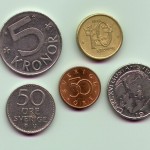 Yesterday’s trade saw GBP/USD within the range of 1.4465-1.4724. The pair closed at 1.4484, plummeting 1.06% compared to Mondays close. It has been the 28th drop in the past 48 trading days and also the steepest one since March 22nd, when the pair depreciated 1.11%. The daily low has been the lowest level since May 23rd, when a low of 1.4440 was registered. The major pair lost 0.88% of its value in May, following two consecutive months of gains.
Yesterday’s trade saw GBP/USD within the range of 1.4465-1.4724. The pair closed at 1.4484, plummeting 1.06% compared to Mondays close. It has been the 28th drop in the past 48 trading days and also the steepest one since March 22nd, when the pair depreciated 1.11%. The daily low has been the lowest level since May 23rd, when a low of 1.4440 was registered. The major pair lost 0.88% of its value in May, following two consecutive months of gains.
At 6:34 GMT today GBP/USD was inching up 0.04% on the day to trade at 1.4490. The pair touched a daily high at 1.4501 at 6:21 GMT, undershooting the daily R1 level, and a daily low at 1.4460 during early Asian trade.
On Wednesday GBP/USD trading may be influenced by the following macroeconomic reports as listed below.
Fundamentals
United Kingdom
Manufacturing PMI by Markit/CIPS
Activity in United Kingdom’s sector of manufacturing probably improved in May compared to a month ago, with the corresponding Purchasing Managers Index coming in at a reading of 49.6, according to the median forecast by experts, up from 49.2 in April. The latter has been the lowest reading since February 2013 and also the first month of contraction since March 2013. The sub-indexes of employment and stocks of purchases fell in April, while those of production and new orders stagnated.
The index is based on a survey, encompassing managers of companies, that operate in sectors such as manufacturing, mining, utilities. They are asked about their estimate in regard to current business conditions in the sector in terms of new orders, output, employment, demand in the future. Values below 50.0 signify that respondents are rather pessimists about business conditions in the sector than optimists.
In case, however, the PMI rose more than projected in April, this would have a strong bullish effect on the sterling. The Chartered Institute of Purchasing and Supply (CIPS) is expected to release the official PMI reading at 8:30 GMT.
Consumer Lending, Mortgage Approvals
Lending to consumers in the United Kingdom probably decreased to GBP 1.600 billion in April from GBP 1.883 billion in March. The latter has been the largest amount borrowed since March 2005. Credit card lending went up GBP 0.6 billion in March, while the average monthly gain in the past 6 months was by GBP 0.4 billion. Other loans and advances surged by GBP 1.2 billion in March, while the average monthly gain in the past 6 months was GBP 1.0 billion.
This indicator represents borrowing by the UK personal sector (individuals only) to fund current expenditures on goods and services, which are a driving force behind economic growth. A larger-than-anticipated drop would have a limited bearish effect on the pound.
At the same time, the number of mortgage approvals in the United Kingdom probably decreased to 67 950 in April, according to experts’ expectations, from 71 360 in March. The latter has been the highest number since November 2015, when a revised up number of 71 330 mortgages approved was reported (70 840 previously). Mortgage approvals are considered as a leading indicator, reflecting the health of the country’s housing market. In case the number of mortgages approved fell more than anticipated, this would imply potentially lower demand in the nations housing sector and, respectively, a somewhat negative impulse for overall economy. Therefore, it would have a limited-to-moderate bearish effect on the sterling. Bank of England will release the official data at 8:30 GMT.
United States
Manufacturing PMI by Markit – final reading
The final estimate of the Manufacturing Purchasing Managers Index for May probably confirmed the preliminary reading of 50.5, according to the median forecast by analysts. It has been the lowest PMI reading since September 2009. In April the final seasonally adjusted PMI stood at 50.8, confirming the preliminary reading.
According to the preliminary report by Markit, ”A renewed fall in production was one key factor weighing on the headline index in May, alongside softer new order growth and further cuts to stocks of inputs. U.S. manufacturers signalled the first reduction in output since September 2009 in May, although the rate of decline was only marginal. A number of monitored firms mentioned that uncertainty around the general economic outlook had caused clients to delay spending decisions, which in turn prompted firms to trim their production schedules.”
”Softer client demand was highlighted by a further slowdown in new business growth in May. Furthermore, the latest expansion in new order books was the weakest seen in 2016 so far. Data indicated that reduced foreign client demand had underpinned slower growth in overall new orders. New export sales fell for the second month in a row, though the rate of reduction softened since April”, Markit stated.
Values above the key level of 50.0 indicate predominant optimism (expanding activity). In case the final PMI for May came in line with expectations or slowed down even further, this would lead to a moderate bearish impact on the US dollar. The final reading is due out at 13:45 GMT.
Manufacturing PMI by the ISM
Activity in United States’ manufacturing sector probably increased at a slower pace in May, with the corresponding manufacturing PMI coming in at a reading of 50.4, according to market expectations, down from 50.8 in April. If so, this would be the third consecutive month of expansion, which followed four successive months of contraction. A larger slowdown than projected would have a strong bearish effect on the dollar. The ISM is to release the official figure at 14:00 GMT.
Feds ”Beige Book” report
At 18:00 GMT the Federal Reserve is to release its ”Beige Book” report. It is published eight times during the year. Each of the banks in the 12 Federal Reserve Districts gathers data in regard to current economic situation in the country on the basis of interviews with key business contacts, economists, market experts, and other sources. In case the Beige Book presents an optimistic economic outlook, this will usually support the greenback, while a pessimistic view will have a bearish effect on the currency.
Daily and Weekly Pivot Levels
By employing the Camarilla calculation method, the daily pivot levels for GBP/USD are presented as follows:
R1 – 1.4508
R2 – 1.4531
R3 (range resistance) – 1.4555
R4 (range breakout) – 1.4626
S1 – 1.4460
S2 – 1.4437
S3 (range support) – 1.4413
S4 (range breakout) – 1.4342
By using the traditional method of calculation, the weekly pivot levels for GBP/USD are presented as follows:
Central Pivot Point – 1.4603
R1 – 1.4765
R2 – 1.4906
R3 – 1.5068
S1 – 1.4462
S2 – 1.4300
S3 – 1.4159





